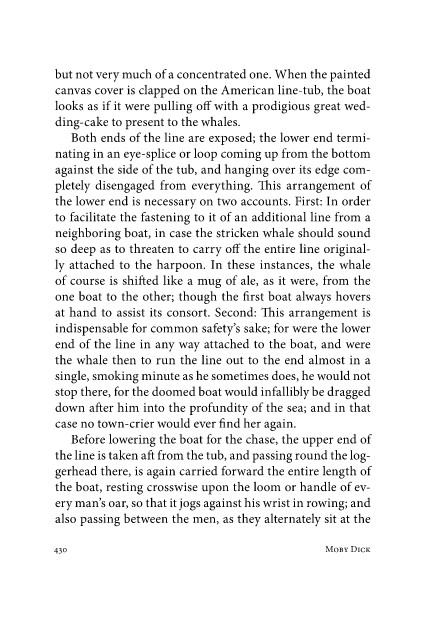Page 431 - moby-dick
P. 431
but not very much of a concentrated one. When the painted
canvas cover is clapped on the American line-tub, the boat
looks as if it were pulling off with a prodigious great wed-
ding-cake to present to the whales.
Both ends of the line are exposed; the lower end termi-
nating in an eye-splice or loop coming up from the bottom
against the side of the tub, and hanging over its edge com-
pletely disengaged from everything. This arrangement of
the lower end is necessary on two accounts. First: In order
to facilitate the fastening to it of an additional line from a
neighboring boat, in case the stricken whale should sound
so deep as to threaten to carry off the entire line original-
ly attached to the harpoon. In these instances, the whale
of course is shifted like a mug of ale, as it were, from the
one boat to the other; though the first boat always hovers
at hand to assist its consort. Second: This arrangement is
indispensable for common safety’s sake; for were the lower
end of the line in any way attached to the boat, and were
the whale then to run the line out to the end almost in a
single, smoking minute as he sometimes does, he would not
stop there, for the doomed boat would infallibly be dragged
down after him into the profundity of the sea; and in that
case no town-crier would ever find her again.
Before lowering the boat for the chase, the upper end of
the line is taken aft from the tub, and passing round the log-
gerhead there, is again carried forward the entire length of
the boat, resting crosswise upon the loom or handle of ev-
ery man’s oar, so that it jogs against his wrist in rowing; and
also passing between the men, as they alternately sit at the
0 Moby Dick

